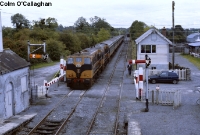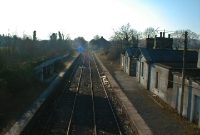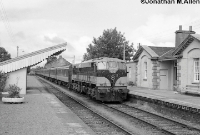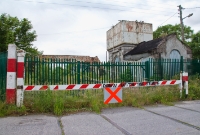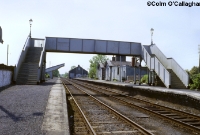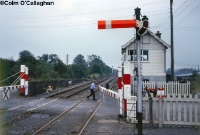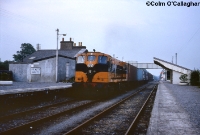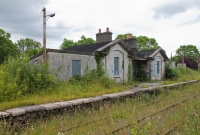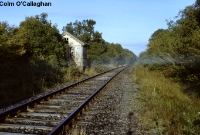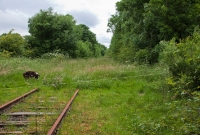Moate
Moate, Co.Westmeath, was the only important stopping place on the former Midland Great Western Railway's main line between Mullingar and Athlone, which opened in August 1851. Up to 1973, this line was used by all Galway and Mayo line trains, but these were re-routed via Portarlington from Great Southern & Western Railway's Heuston Station in Dublin. Thus the Mullingar to Athlone line became the poor relation to the main line to Galway and the west after this, with the last scheduled passenger service having traversed the route in 1987. The line remained in use however for frequent freight trains up to the late 1980s, and latterly specials and PWD workings until early 2000s. Today, Moate has fallen into a state of dereliction since the late 1980s onwards, and today the MGWR boarded up station, wooden waiting shelter, footbridge and water tower are rather worse for wear. The signal cabin remains in situ, but the associated signalling equipment has been removed and a permanent fence has been placed across the tracks.



